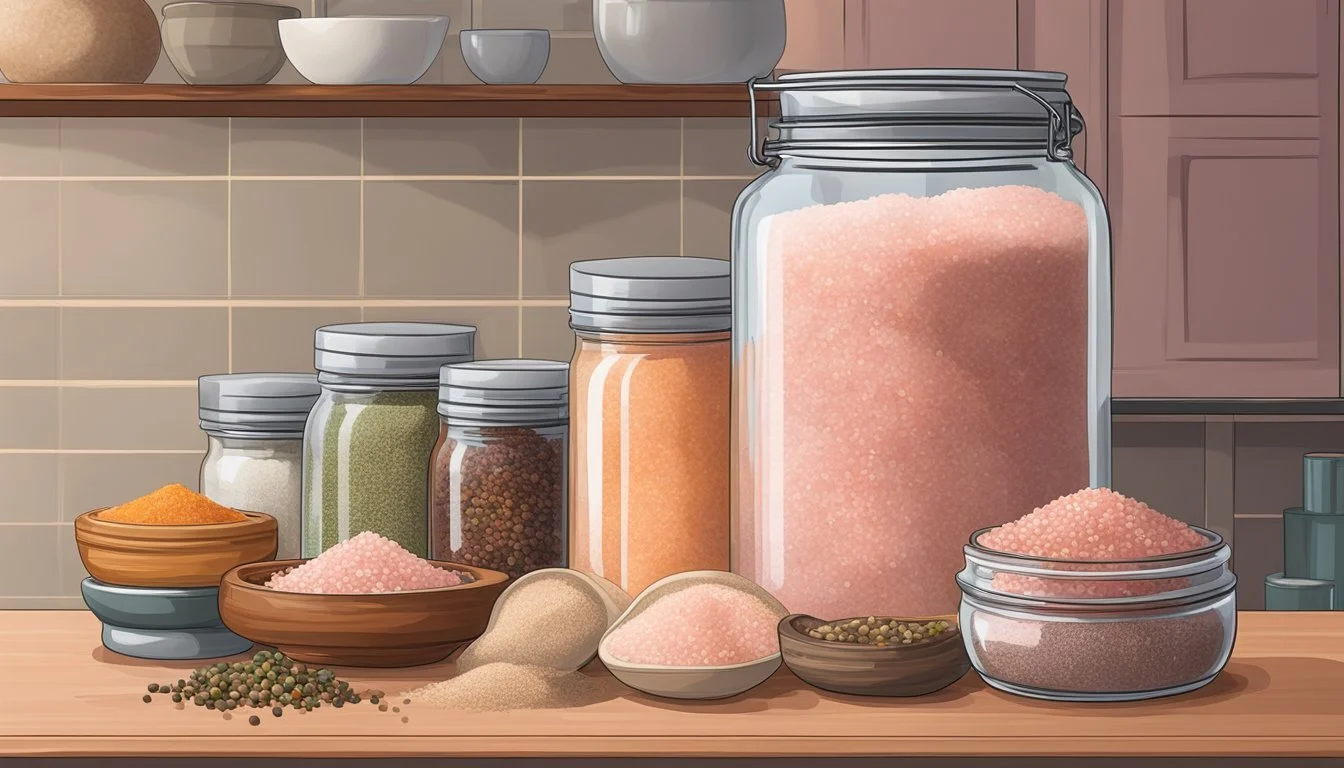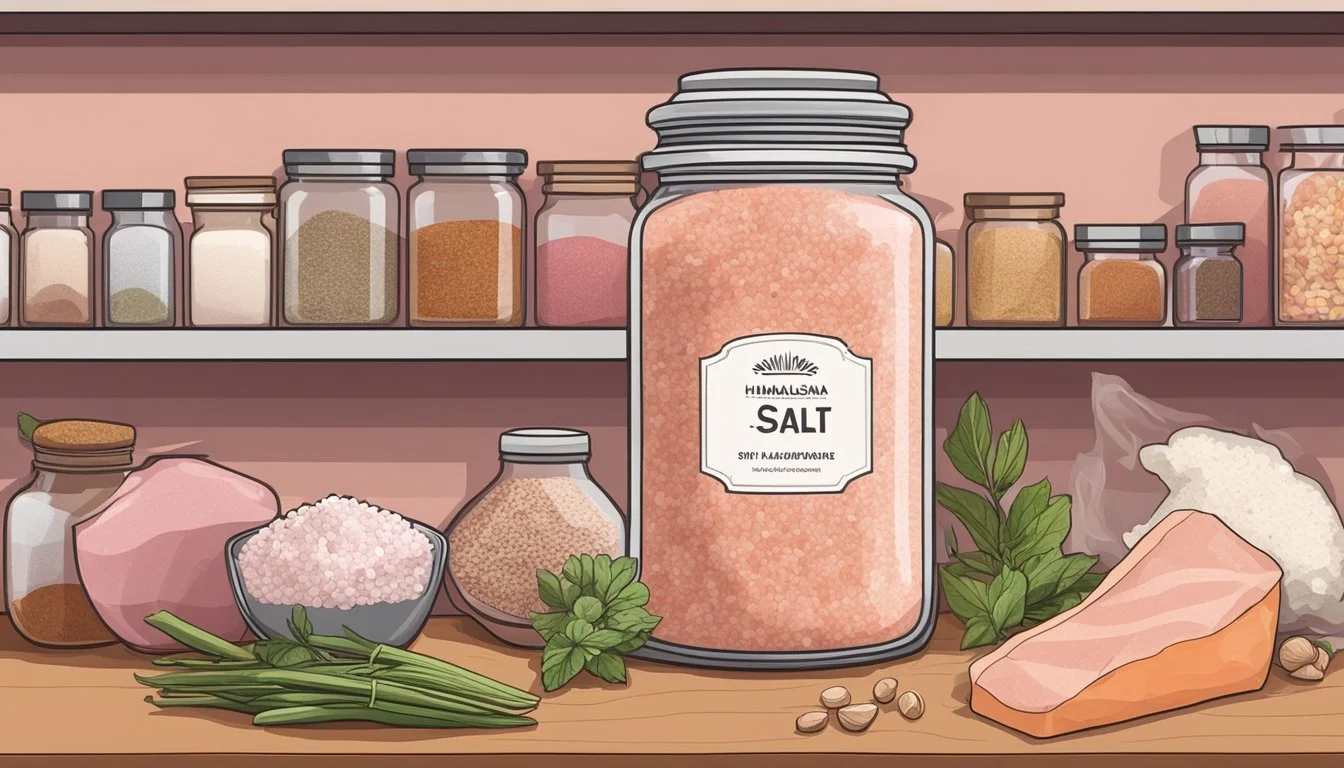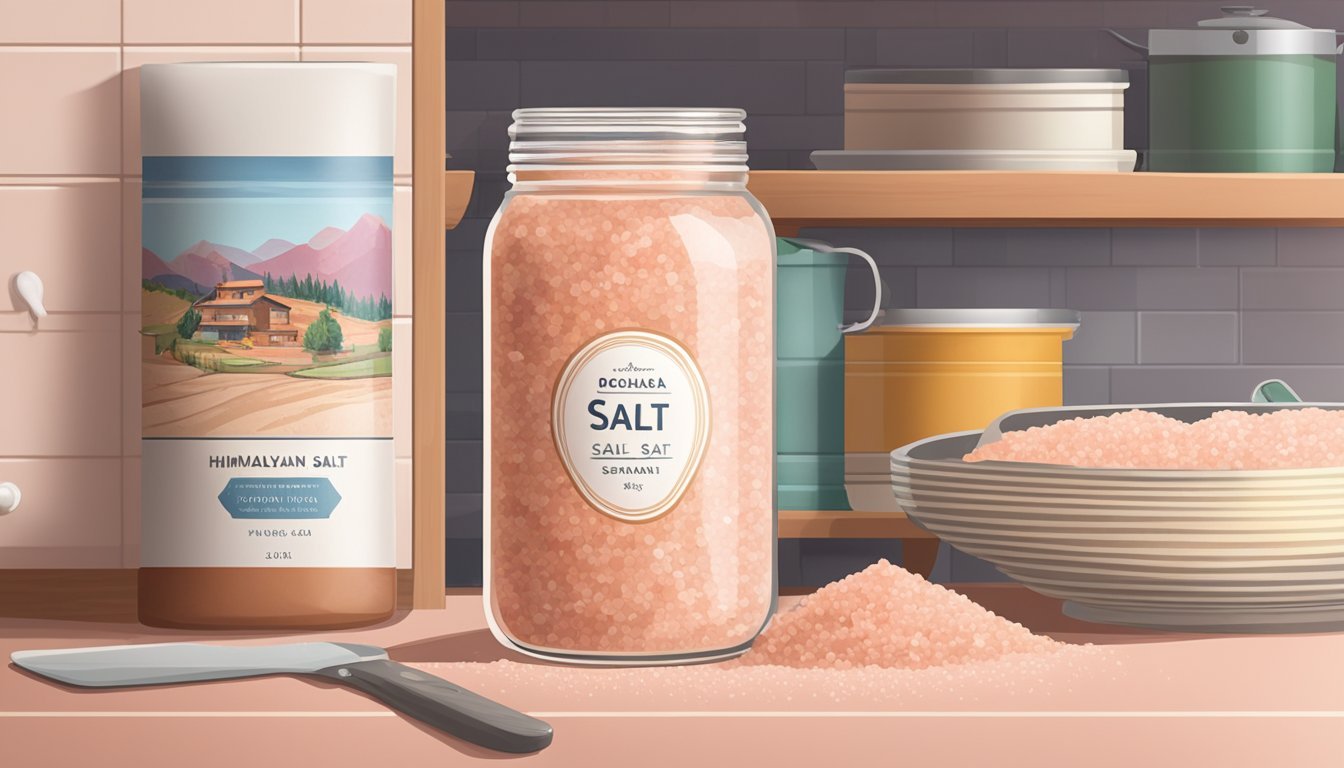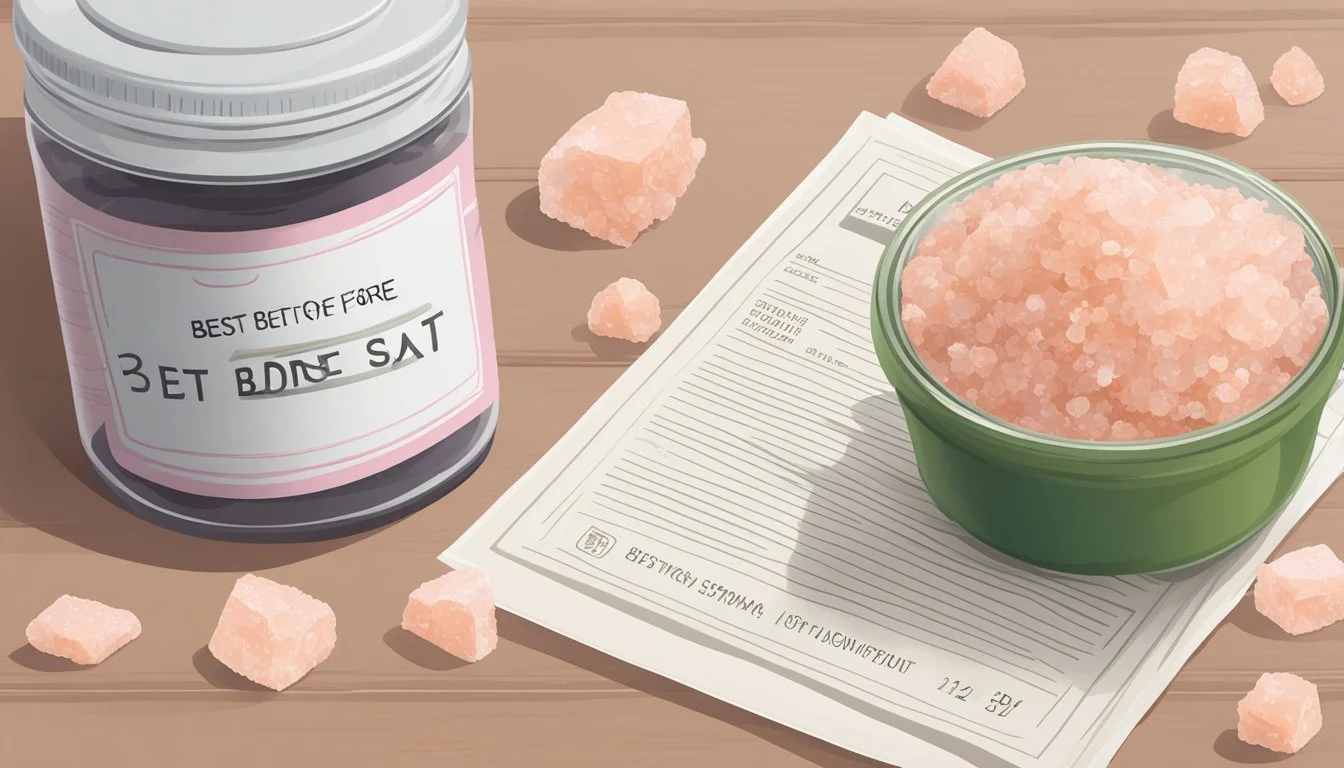How Long Does Himalayan Pink Salt Last?
Understanding Shelf Life and Storage
Himalayan pink salt, known for its distinct pink color and purported health benefits, is a type of rock salt (how long does rock salt last?) extracted from the Khewra Salt Mine in Pakistan. It's popular among health enthusiasts and gourmet cooks alike, often touted for its natural extraction and minimal processing, which preserves its mineral content. The presence of these minerals not only contributes to the characteristic appearance and flavor of the salt but is also believed to play a role in its storability, seemingly allowing it to maintain its quality over indefinite periods when stored correctly.
Unlike table salt, which may contain additives that can affect its shelf life, Himalayan pink salt is typically unrefined and does not include any external chemicals or preservatives that might lead to spoilage. Its mineral content is associated with a hygroscopic nature, meaning it has the ability to attract and retain moisture, which is why storage away from moisture and heat is crucial to preserving its purity and preventing any potential clumping over time.
The concept of Himalayan pink salt expiring is often dismissed by experts. Many assert that if it is kept in an environment free from contaminants, moisture, and high temperatures, Himalayan pink salt has the potential to last for many years, possibly even outliving its owners. This remarkable shelf life makes it a durable staple in kitchens for both culinary applications and potential health advantages.
Understanding Himalayan Pink Salt
Himalayan pink salt is unique in its origin and rich mineral composition, distinguishing it from other salts. It is often discussed in terms of potential health benefits and risks.
Origin and Composition
Himalayan pink salt is mined from the Khewra Salt Mine in Pakistan. It is known for its distinctive pink color, which is due to iron oxide and other minerals it contains. Himalayan pink salt is primarily sodium chloride but also includes trace minerals such as calcium, potassium, magnesium, and iron.
Comparison with Other Salts
Different salts offer varying mineral compositions and processing methods:
Table Salt: Typically heavily processed to remove minerals; often contains an additive to prevent clumping.
Iodized Salt (how long does iodized salt last?): Regular table salt with iodine added to prevent iodine deficiency, which is important for healthy thyroid function.
Sea Salt: (how long does sea salt last?) Made by evaporating seawater, less processed than table salt and can contain trace minerals found in the ocean.
Kosher Salt: Larger flakes and crystals; processing can be similar to regular table salt but usually contains no additives.
Himalayan Pink Salt: Less processed, retaining its minerals, which contributes to the pink color and different health claims.
Health Benefits and Risks
While the American Heart Association and the National Institutes of Health caution against high sodium intake due to risks such as heart disease and high blood pressure, some argue that Himalayan salt’s mineral content can offer health benefits. These benefits may include improved mineral status and aid in maintaining proper hydration.
However, it's important to note that despite its additional minerals, the main component of Himalayan pink salt is still sodium chloride, and it should be consumed in moderation to maintain healthy blood pressure and reduce the risk of stroke and kidney disease.
Shelf Life of Pink Himalayan Salt
Pink Himalayan salt is renowned for its long shelf life, often outlasting regular table salt due to minimal processing and its mineral content. This section will explore the factors that affect its longevity, indicators of degradation, and the best storage practices to ensure its continued quality.
Factors Affecting Shelf Life
Pink Himalayan salt’s longevity is largely due to its natural composition, which includes trace minerals that protect against spoilage. However, moisture and air exposure can influence the salt’s condition over time. Bacteria growth, which is a common cause of food spoilage, is minimal in salt due to its natural dehydrating properties. Yet, prolonged exposure to moisture can promote bacterial presence, potentially reducing the salt's purity and shelf life.
Moisture: Attracts bacteria and may cause the salt to clump.
Air: Oxygen can lead to oxidation of the trace minerals.
Storage Conditions: Variations in temperature and humidity can affect salt quality.
Signs of Degradation
Although inherently stable, Pink Himalayan salt can demonstrate signs of degradation under certain conditions. Watch for:
Clumping: Caused by moisture absorption.
Color Changes: While color can indicate the presence of mineral impurities, significant shifts may suggest contamination.
Offensive Odor: An unusual smell can be a sign of bacterial growth.
Storage Recommendations
To maintain the integrity of Pink Himalayan salt and prevent spoilage, follow these storage recommendations:
Airtight Container: Ensures protection from moisture and air.
Cool and Dry Location: A pantry away from heat sources is ideal.
Avoid Direct Sunlight: To prevent the degradation of minerals.
Storage Chart:
Condition Recommendation Container Use an airtight container Location Store in a cool, dry pantry Light Exposure Keep away from direct sunlight and artificial light
By adhering to these storage guidelines, Pink Himalayan salt can reliably retain its quality without an expiration date, ensuring it remains a flavorful and pure addition to culinary endeavours.
Usage in Cooking and Preservation
In the realm of culinary arts and food preservation, Himalayan pink salt serves dual pivotal roles: it is both a flavor enhancer and a preservative. Its mineral content and antimicrobial properties contribute to its versatility in different cooking contexts and preservation methods.
Culinary Applications
Himalayan pink salt is a sought-after seasoning, valued for its rich mineral content and unprocessed quality. Utilized in various forms—coarse, finely ground, or as large blocks—it imparts a subtle yet distinct flavor that differentiates it from regular table salt. Chefs frequently employ Himalayan salt blocks for both their aesthetic appeal and their ability to retain heat, making them an excellent medium for:
Searing meats: The salt blocks can be heated to high temperatures, allowing for a flavorful crust on steaks.
Cooking seafood and vegetables: Similarly, these blocks provide a uniform cooking surface, infusing dishes with a mild saltiness.
Safe Use of Salt Blocks
Do not use detergent or submerge the block in water, as this can erode the salt.
Simply wipe the salt block with a damp cloth and then use a scrub brush or scouring pad to remove food particles.
Preserving Food with Salt
Preservation through the use of salt, including Himalayan pink salt, is an age-old technique predicated on its ability to inhibit, if not completely prevent, bacterial growth. Salt achieves this by drawing water out of the cells of both the food and any bacteria present through the process of osmosis, thus depriving the bacteria of the moisture it requires to thrive. This method of preservation is effective for:
Curing meats: Pink salt can be used to draw moisture out of meats, extending their shelf life.
Pickling vegetables: As a preservative, Himalayan salt can create a brine that shields vegetables from spoilage.
The quality of the salt directly affects the flavor and the preservative capabilities—Himalayan pink salt, with its trace minerals, not only enhances taste but ensures a high-quality preservation. By diligently managing contact with excess water and bacteria, this salt maintains its preservative properties for years.
Himalayan Pink Salt Products
Himalayan pink salt products span beyond culinary uses, branching into both decorative and health-related items.
Salt Lamps and Decorative Items
Himalayan salt lamps have surged in popularity due to their distinctive pink hue, which adds an aesthetic element to any space. They are crafted from large salt crystals, typically originating from the Punjab region of Pakistan. These salt lamps are not only valued for their warm, inviting glow but are also believed by some to release negative ions into the air, although this claim lacks scientific support. Manufacturers also offer a variety of other decorative items made from Himalayan pink salt, including candle holders and serving dishes, which boast the natural beauty of the salt's crystal structure.
Health-oriented Products
The trace elements found in Himalayan pink salt, such as potassium, calcium, and magnesium, contribute to its reputation as a healthier alternative to processed table salt. Products like bath salts are popular for their purported ability to improve skin conditions and reduce soreness by leveraging these trace minerals. However, it's important to note that many health claims associated with pink salt are not backed by robust scientific evidence. Some claims, for instance, serotine that using Himalayan pink salt can increase libido, are particularly controversial and should be approached with skepticism. As a result, consumers should manage their expectations and should consult healthcare professionals regarding any significant health issues.
Labeling and Regulations
Understanding the labeling and regulations of Himalayan pink salt is crucial for both consumers and manufacturers, as it helps ensure product safety and informs about its content and shelf life.
Understanding Salt Labels
Labels on Himalayan pink salt packaging serve a specific purpose. They provide consumers with important information such as nutrition facts, ingredients, and any additives used. Most Himalayan pink salt is marketed as a natural product without additives, which can include anti-caking agents found in regular table salt. Labels may assert that the salt contains numerous nutrients and trace minerals, often considered beneficial to health. However, it's worth noting that Himalayan pink salt typically does not contain iodine, an element added to table salt to help prevent deficiencies. Therefore, labels will seldom list iodine unless it's been added.
Food Safety Standards
The U.S. Department of Agriculture (USDA) and the Food and Drug Administration (FDA) oversee the safety and labeling of food products. While salt, including Himalayan pink salt, is generally recognized as having an indefinite shelf life due to its mineral content and natural preservation properties, it still falls under these regulatory bodies for labeling purposes. If a product does include an expiration date, it may be more about quality concerns rather than a strict safety issue. Labels indicating that the product has "expired" can guide consumers on peak quality rather than a definitive point at which the salt becomes unsafe to consume. Manufacturers need to comply with regulations, ensuring that any claims made on the label, particularly regarding health benefits or nutrient content, are accurate and not misleading.
Miscellaneous Concerns
When discussing Himalayan pink salt's longevity, there are a few aspects that need special attention, including environmental impacts, common inquiries, and research-based findings.
Environmental and Ethical Considerations
Himalayan pink salt is often touted as a natural and minimally processed alternative to regular table salt. However, the environmental impact of mining this resource, as well as the ethical considerations of labor practices in the regions where it is sourced, can be significant. It’s essential to evaluate the practices of Himalayan salt suppliers to ensure they are sustainable and ethical.
Frequently Asked Questions
Does Himalayan pink salt expire?
In general, Himalayan pink salt has a significantly long shelf life and does not expire if kept in a dry environment, away from heat sources.
Is there any safety concern with using expired Himalayan salt?
Since Himalayan salt does not spoil, there are no safety concerns associated with using salt that has been stored for long periods.
What is the Recommended Daily Amount of Himalayan pink salt?
The recommended daily amount does not differ significantly from that of regular salt; individuals should consume no more than 2,300 mg per day, according to dietary guidelines.
Scientific Research and Findings
The durability of Himalayan pink salt is well-supported by scientific research. One such study is from the Journal of Sensory Studies, which confirms the stability of natural salts over time, including Himalayan pink salt. Given its purity and lack of additives, Himalayan salt does not degrade as quickly as more heavily processed salts like some forms of table salt or certain types of sea salt.








